I Drove the 2025 Ford Explorer Platinum 4WD on a Multi-State Road Trip. Here's My Brutally Honest Review originally appeared on Autoblog.
A family affair
The Explorer moniker has been in my family for quite some time. My mom inherited her mom’s 1991 Ford Explorer, which had part-time 4WD, and it was my favorite. I was promised it would be my first car when I got my license, and then it was given to my older brother. Some years later, my dad brought home a 2006 Eddie Bauer edition with navy blue paint and tan accents (and, yes, the 5.0-liter Mustang GT V8). I rode shotgun for several road trips, and once again, fell in love with it. We were lucky to get 12 mpg on most trips, but it was one of my favorite cars. My dad traded it in for a Ford Fiesta, and then I never stepped into a Ford Explorer again.
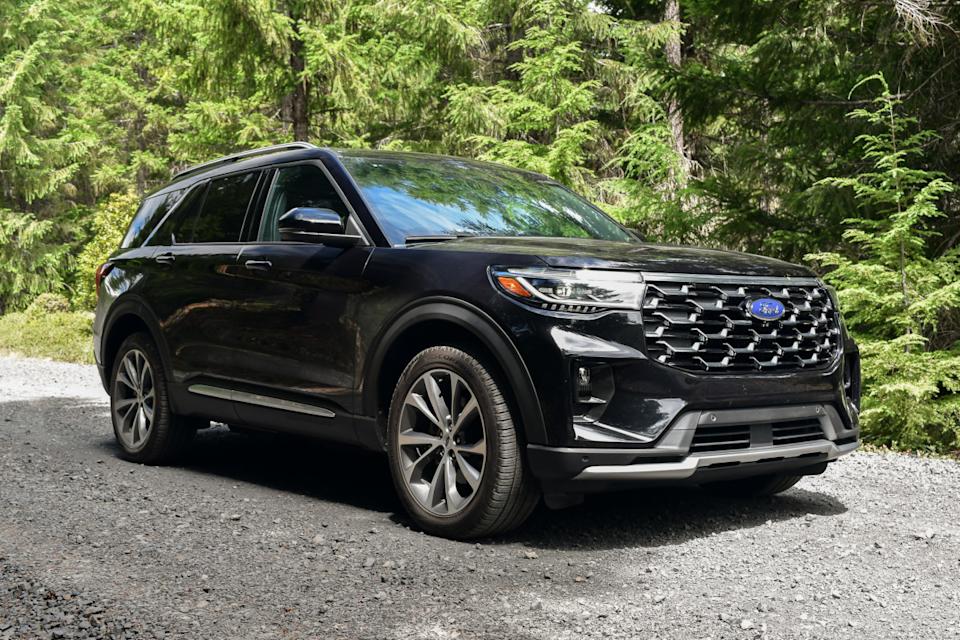
Until now. I reviewed a 2025 Explorer Platinum 4WD with the optional 400-horsepower 3.0-liter twin-turbocharged V6 and a third row, which made it feel significantly larger than the Explorers I grew up with. I was overall impressed by it. The power, the technology, the included packages, and the price felt very fair compared to what comes with it. In many ways, it felt like the Explorers who still hold a candle in my heart. In just as many ways, it felt much, much different. After a 5.5-hour road trip from Bend, Oregon, to Seattle, Washington, I became very familiar with it. Let’s dig in.
As a family vehicle, it fit in seamlessly
The model I reviewed had captain’s chairs in the second row, and even with two toddlers in car seats, I would prefer the bench seat to accommodate another passenger. During my review, my older sister and 16-year-old niece were in town for a LaCrosse tournament. Since my niece is fairly petite, she was delighted to help me review the third seat. She said it was “alright.” She barely had room for her knees, the windows were small, and she resorted to sitting slightly sideways and putting her legs through the gap between the captain’s chairs.
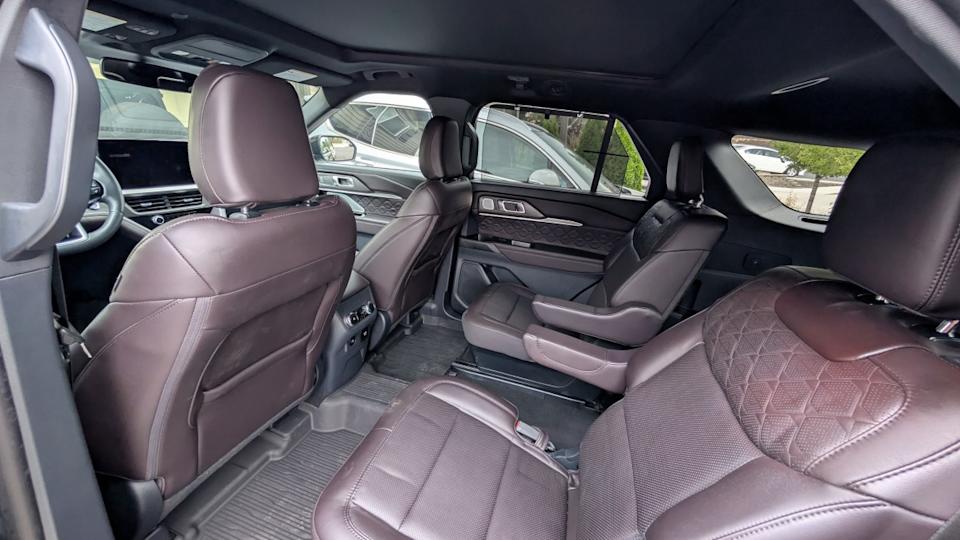
She did, however, greatly appreciate the charging ports and the dedicated A/C vents. I’m not sure why the Explorer needed to be a 3-row SUV; perhaps it was intended as a smaller alternative to the gargantuan Expedition. However, if you’re looking at one specifically for the third row, consider an Expedition instead. It’s not that comfortable, even for a petite teenager. When they left, I kept the third row folded and enjoyed all that extra cargo space. My toddlers loved being able to climb into the car seats, which were delightfully easy to install. Since they were captain’s chairs, I didn’t have to climb into the trunk to secure the top tether hook. I just crawled in between the chairs and secured them that way. I’d still opt for the bench seat, though.
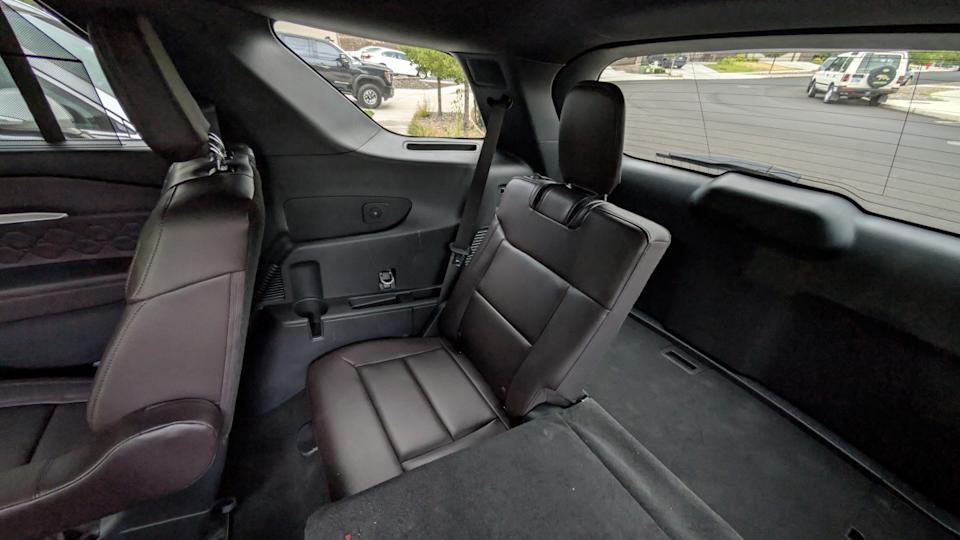
The Explorer I drove had built-in rear window shades, and they came in handy while we sat in traffic. My daughters loved the large windows and the panoramic sunroof, but they hated having the sun beating down on them. The rear climate control was easy to manipulate from the center screen or just reaching into the back and flipping a few switches, which I loved. Once I adjusted the fans above the seats to blow on them, keeping them cool was easy and thankfully very quick.
The updated interior and included packages made for a very fair price
The Platinum 4WD is a step below the ST model, so the starting MSRP is $52,525. When you factor in the special leather seats with the diamond patterns and the optional V6 (otherwise it comes with a 300 hp turbo-four, and I’d pick the V6 every time), it’s a little more than $57,500. If you don’t go with the seats, it’s $54,700. When you look at the included packages, like a towing package that boosts towing to 5,000 lbs and comes with Trailer Sway Control, a year of hands-free highway driving Blue Cruise, and intelligent 4WD system with a limited slip differential in the rear, three rows, a Bang & Olufsen sound system, Co-Pilot, and Ford’s top-shelf safety and security suites, it’s an incredibly fair price.
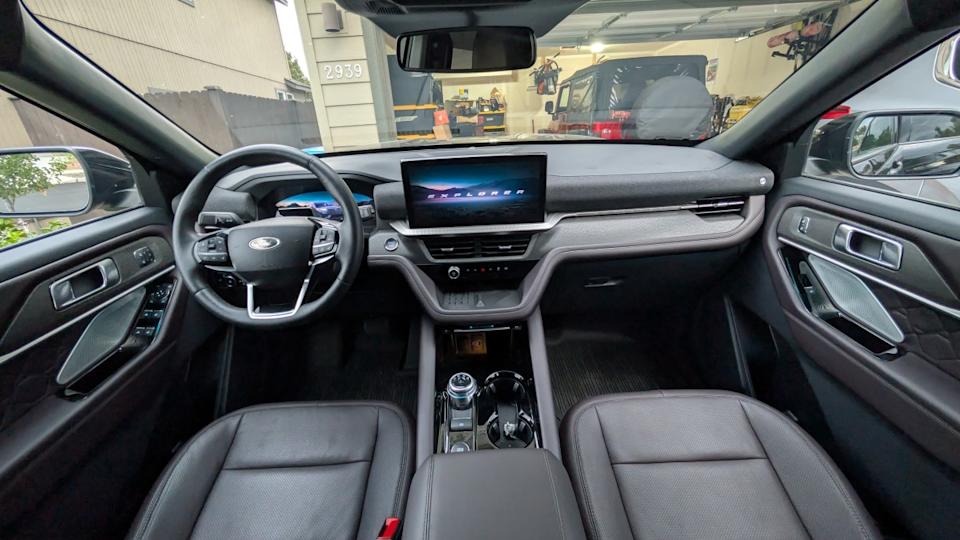
I especially liked the power that came with the V6. It made the large SUV feel very nimble and agile. Driving on the mountain pass was no sweat for it, even when passing large trucks going uphill. Many of the cars I’ve reviewed struggled, but not the Explorer. The updated interior with the faux wood accenting added a touch of luxury that Ford is finally figuring out a solid recipe for. In past Explorers, the interior materials and designs felt a bit cheap, with the Expedition being the fancy option. This time around, it felt very upscale, and now it fits right in with other large SUVs like the Hyundai Palisade, Kia Telluride, Mazda CX-90, Honda Pilot, Toyota Highlander, Chevy Traverse and Tahoe, or GMC Yukon–without much compromise, and for noticeably less than its fellow American counterparts.
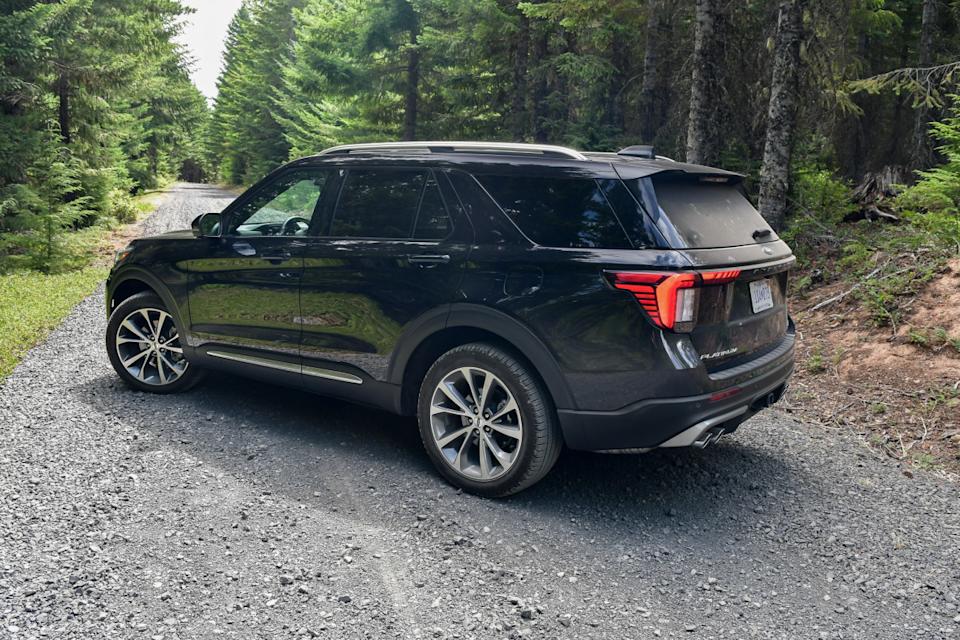
However, I will say, though, while the interior layout and design were gorgeous, that price point came with a few cuts to quality. My niece would crawl into the third row from the trunk since car seats were in the second row, and even with the chairs slid as far back as they could go, it was hard for her to squeeze into the back. Every time she’d crawl in through the back, I watched the bumper crease and bend and heard it creak like she was 400 lbs–and she’s quite small. The door panels in the rear were pretty chintzy and would creak and give with even the slightest bit of pressure, and the same could be said for the pieces in the center console. I was a little disappointed that the interior bits moved and sounded like the interior of a car from the 1990s, since it raises a lot of questions about durability and longevity, so keep that in mind when you’re test-driving one. Toddlers are brutal, almost as brutal as the prices of trim pieces.
Mileage wasn’t all that bad for a twin-turbo-toting large SUV
For some reason, Ford discontinued the hybrid Explorer (at least for us normies, apparently; police still receive the hybrids), right as the market for large hybrid SUVs shifted from a small spark to a full-on blaze. I do think Ford would benefit from bringing the hybrid powertrain back, but even without it, I was surprised how well the EcoBoost did in normal everyday situations. Driving around town doing pick-ups and drop-offs with my teenage niece, going to the grocery store and back, or bringing my husband the occasional forgotten tool, I was getting around 18 mpg. It’s not stellar, but it’s truly not bad for a full-sized, three-row SUV with twin turbos. When I hit the highway and drove to Washington, with stops and the occasional passing of a semi, I was averaging 27.6 mpg. Again, it’s not the greatest, but all things considered, I expected a lot worse.
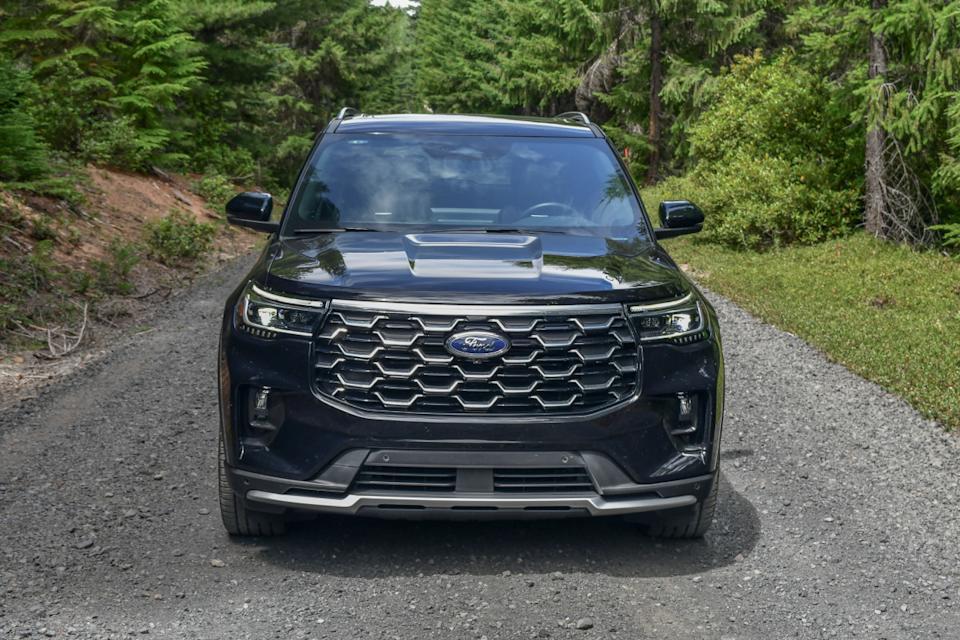
Obviously, you’d get better mileage if you got the smaller engine, but I’m a firm believer in matching engine size to the size of the car, and the V6 felt like the best match for the Explorer. And again, I wasn’t that put off by the mileage. It’s got plenty of pep, and once you master that touchy gas pedal and those sensitive brakes, it’s a very tame and smooth driving SUV. I did, however, cringe when I had to fill ‘er up on the way home. For 15 gallons, it costs almost $86, but I did get almost 400 miles out of a tank. So, make sure that if you get the V6, you budget about $100 for gas every two weeks.
It was nice off-road, but I have questions about the four-wheel drive setup
I saw the “4WD” badge on the back of the Explorer, and I immediately went looking for transfer case gear selectors. I could be old school, but I feel like most four-wheelers have a shifter to enable 4Hi, 4Lo, 2Hi, or 2Lo. I didn’t see that at all in the Explorer, and believe me, I looked everywhere. I leafed through the six drive modes (Normal, Eco, Sport, Towing/Hauling, Slippery/Snow, and Off-Road), thinking there’d be a dedicated drive mode for the 4WD system, but there wasn’t one. The “Off-Road” mode, which came in handy when I decided to detour on a forest service road to take pictures, prompted a message on the dashboard warning the driver not to use this drive mode on-road, so I assumed this was where the 4WD system was truly utilized.
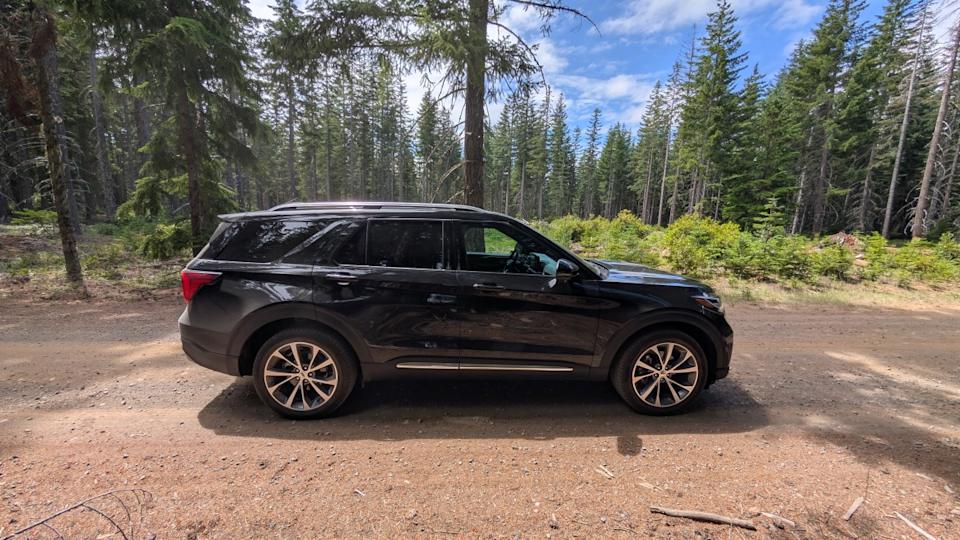
Ford’s website says the intelligent 4WD system is like many others, where computers and sensors keep the system dormant unless slipping is detected or it’s manually switched into a dedicated off-road driving mode. Without being able to switch the transfer case speeds, any sort of locking differentials, or a switch to truly activate it, it felt a lot more like a tougher all-wheel drive system than a diluted four-wheel drive system, but I’m fully willing to acknowledge that could be a “me” thing. When I was off-road, putting it into the “Off-Road” driving mode did just fine. I never lost traction, the RPMs were kept high, and it was poised. Granted, I was on a mostly gravel trail, but I don’t know that I’d trust it for much more than the occasional jaunt to the ski slopes on plowed roads.
The suspension helped keep the shaking and bumping from translating too much into the cabin, and I could see that coming in handy when towing a camper to a campsite or a boat to the lake. A happy cabin is a quiet one, and it seemed to handle that quick off-road trip perfectly fine. I just don’t know that I’d call it a true, four-wheel drive system. I forgot to look underneath to see whether or not there was a transfer case, so I’m chalking that up to opinion, and not fact.
Blue Cruise on the long drive home was truly life-changing
Before I started reviewing cars, the most advanced cruise control I’ve experienced was in my 2011 Subaru Forester. It’s meant to keep the speed, and that’s that. No automatic braking, no adaptive speed settings, no automatic anything. I set the speed, and I was responsible for the rest. When I drove into Yakima, Washington, on my way home to Central Oregon, I spotted a “Blue Cruise Available” light on the dashboard. Thankfully, enabling it was as simple as pressing a button on the steering wheel, setting a speed, and the Explorer literally did the rest.
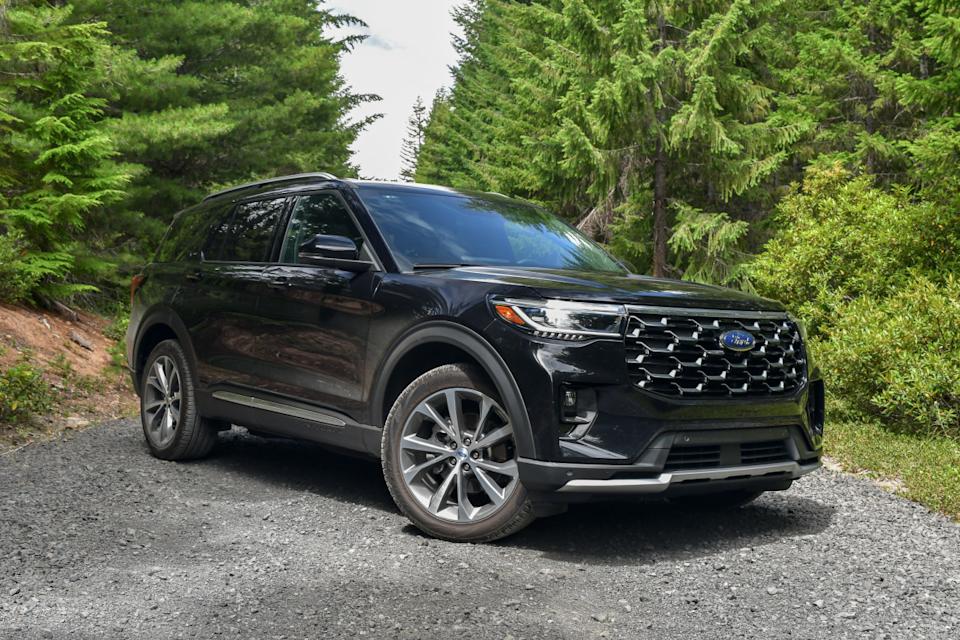
The traffic was a bit heavy and the sun was coming directly into the cabin, so I kept my hands on the wheel, but the automatic speed control and braking–and the distance between you and the car in front is determined by you, which is cool–was so nice. I was able to give my leg a rest, activate the massaging seats (which I loved coming into Seattle, especially the butt massagers), turn up my tunes, and enjoy the scenery. I never got to experience the “hands-free” or automatic lane changing because the traffic was so heavy and slow-moving, but I adored the automatic braking and acceleration.
Even when the traffic came to a stop, the Explorer would hold and then start moving as the lead car did. It was an amazing feature that I’d borderline worship if I had my toddlers in the car. They don’t travel well, and they get bored and resort to “accidentally” dropping their toys and snacks, so having this on would allow me to “help” them while the Explorer handled the rest. I used Blue Cruise for about three hours collectively, and being able to fish through my purse to grab my chapstick without disturbing the flow of traffic was amazing. It’s almost too bad that Ford, like GM, charges a subscription for this feature. The Platinum comes with a year of Blue Cruise, and after that, drivers have to pay.
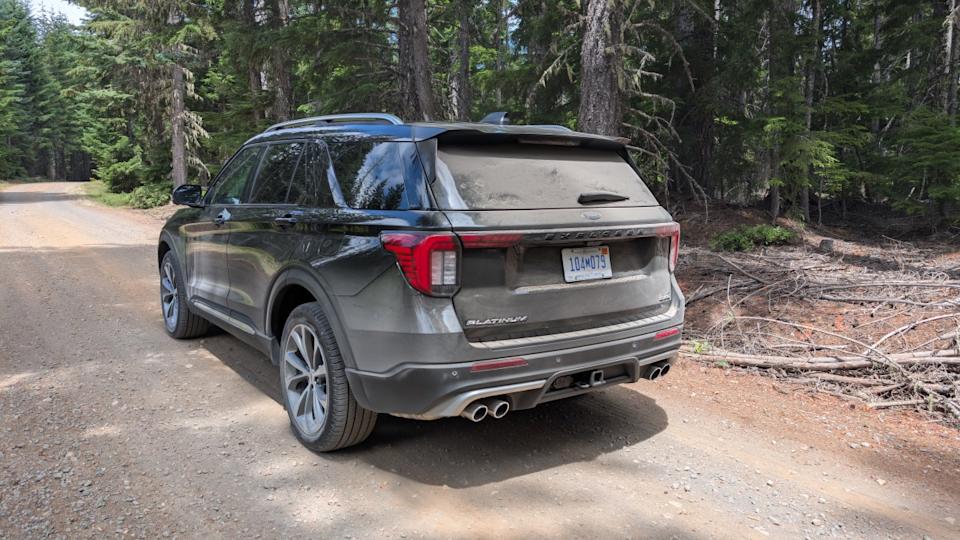
If you get the more expensive ST trim, you get it for a lifetime. I’m sort of sick of subscriptions, so that irked me a little, but that’s me. It’s a feature worth paying for if you’re traveling long distances on a very regular basis, or your long commute home is grueling. Otherwise, I don’t think it’s worth paying for a subscription. A little extra added to the vehicle price? Sure, but not a subscription.
Final thoughts
The Explorer has come a long way since I was last in the driver’s seat, and I mean that in a good way. Mostly. I loved the updated interior, Blue Cruise, and all the features that came with the price tag, but it sort of felt like it was trying to be a luxury SUV, and not an SUV that’s tough, nimble, and quick enough to be used as a police interceptor. I wasn’t a fan of the interior quality, and it made me question how many other corners were cut to make the Explorer fit into the price point. I worry that those cuts may also have affected other important aspects, such as the engine or transmission.
That said, I loved the design and layout of the interior, but I wish it didn’t have a third row, since it was barely usable for a petite teenager. Otherwise, I loved how easy it was to drive, how spacious it was, and how fast it is with the 400 hp 3.0-liter twin-turbo V6. I definitely understand why they’re used as police cars and are growing in popularity. They’re uncomplicated, comfortable, surprisingly efficient, and have everything you could ask for included in the price–no need to haggle about add-ons and packages.
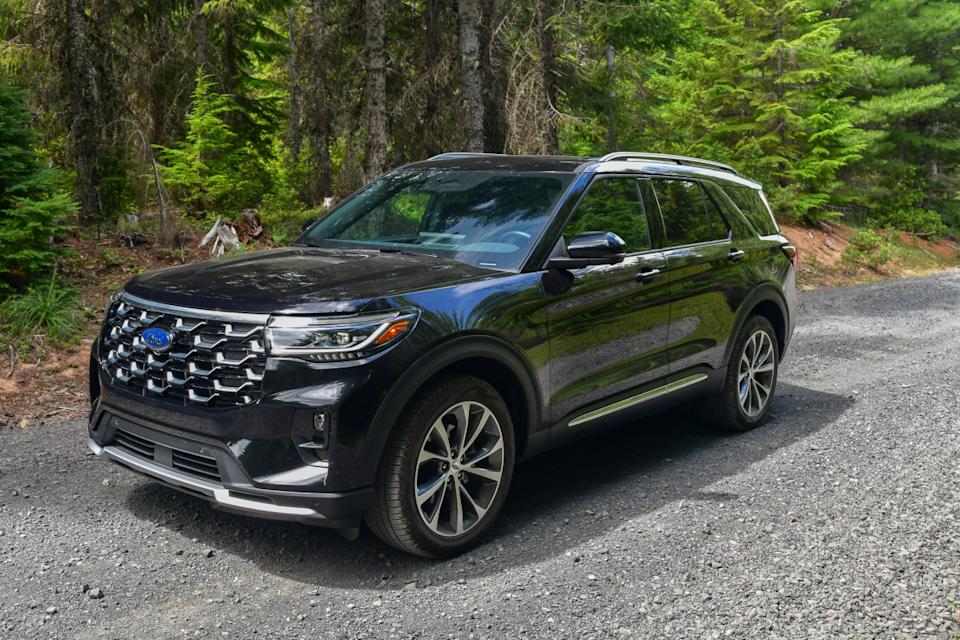
I Drove the 2025 Ford Explorer Platinum 4WD on a Multi-State Road Trip. Here's My Brutally Honest Review first appeared on Autoblog on Jul 28, 2025
This story was originally reported by Autoblog on Jul 28, 2025, where it first appeared.
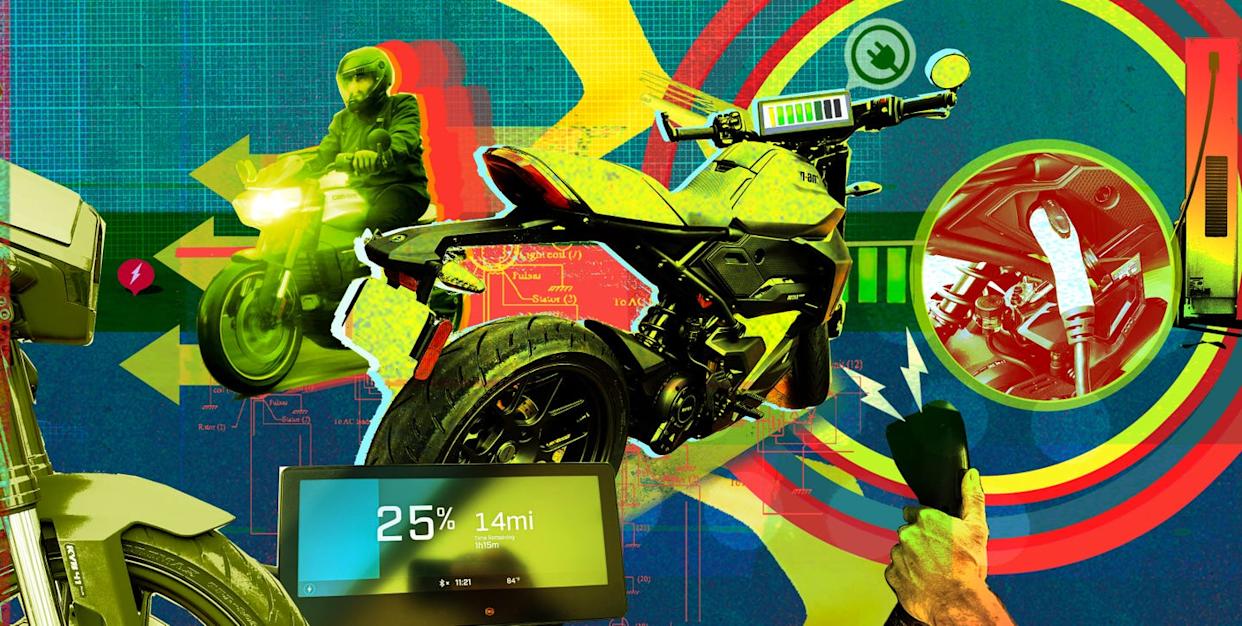
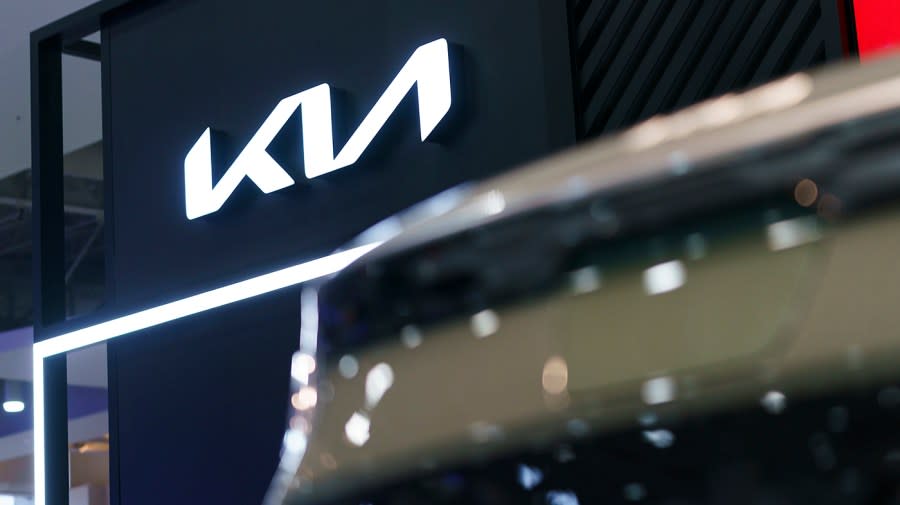
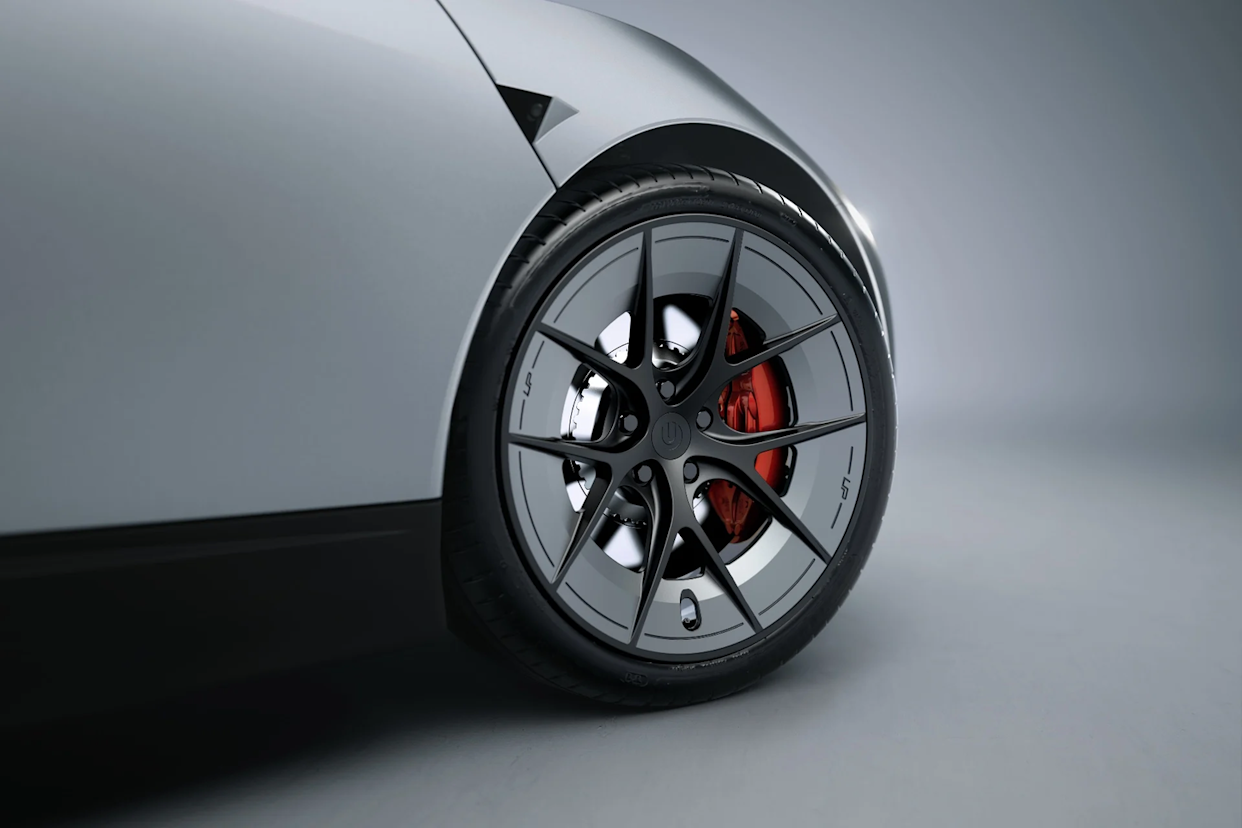
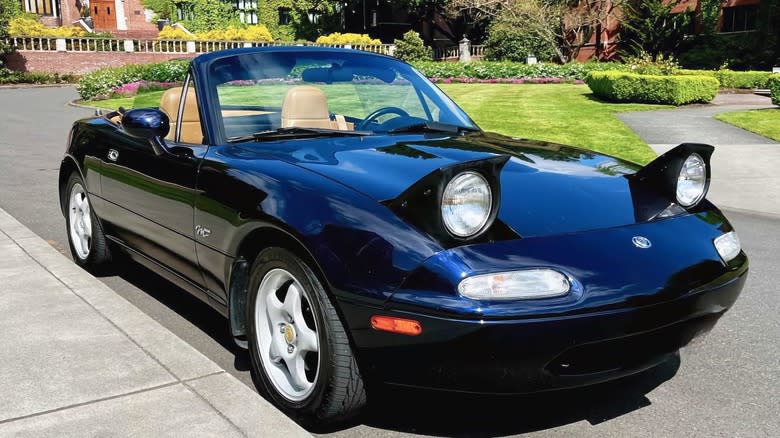
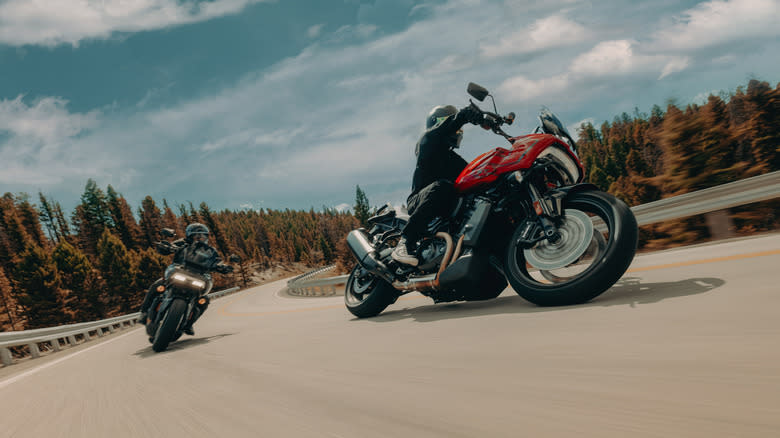
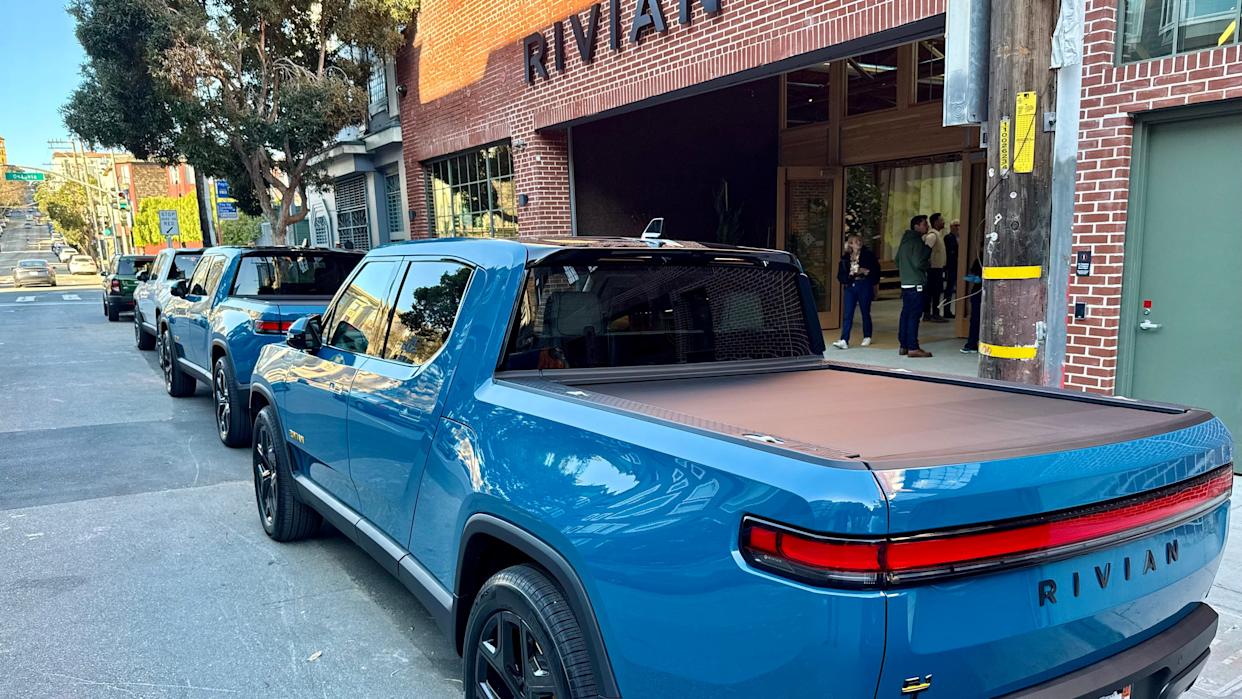
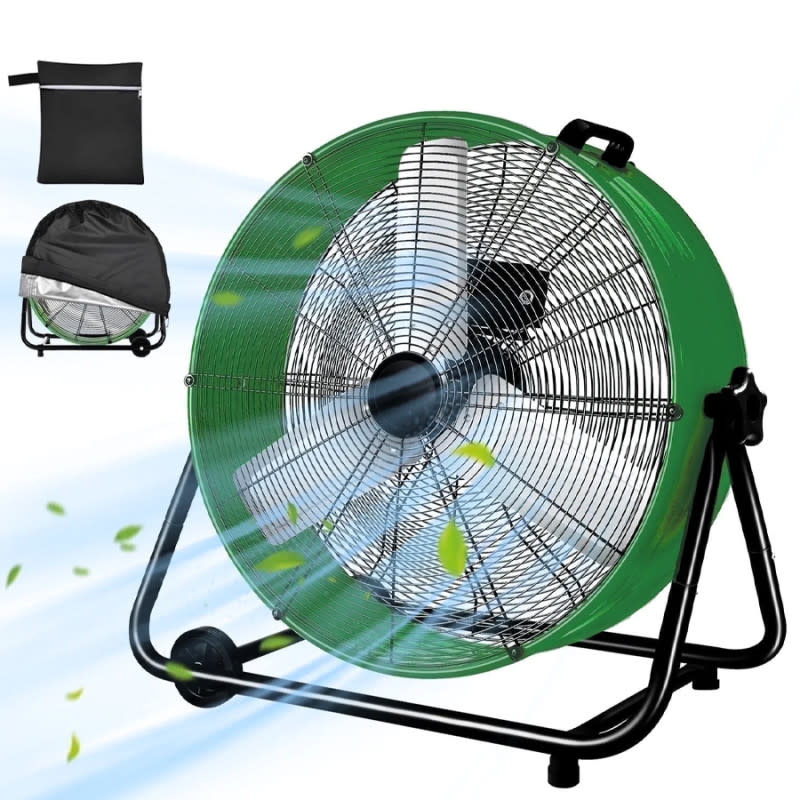

Comments